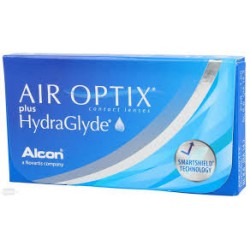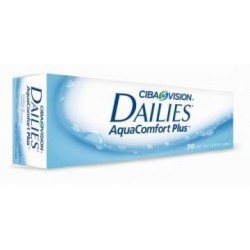Is It Safe To Drive In Contact Lenses

Determining whether it’s safe to drive while wearing contact lenses is not a simple matter and requires consideration of several factors. These factors may include your driving license status, the results of your eye tests, your experience driving at night, the specific type of contact lens you use, and whether you also need prescription glasses.
In this article, we will explore these topics in detail and provide you with valuable information on the types of corrective lenses recommended for driving, the importance of wearing them, the safety considerations involved, the implications of wearing contacts while driving at night, and what you need to know about wearing contacts behind the wheel. So, let’s dive right in!
The Types of Corrective Lenses Recommended for Driving
While lenses may appear simple and easy to understand, they result from centuries of research and experimentation, making them a true masterpiece of technology. Here are the six most common types of lenses available for driving.
Rigid Gas Permeable (RGP) lenses
Though there aren’t specific contact lenses designed for night driving, it is best to use clear contact lenses to give you the best vision for nighttime driving. Rigid-gas-permeable contact lenses often beat soft contact lenses due to their clear, sharp vision – however, they can be challenging to wear, especially for first-time wearers. Also, there are some not-so-great sides to note.
People often report that it is not anti-glare, making it difficult to see the road. Also, since it is smaller than soft lenses, the edge of the lens may interfere with your vision. Finally, there could be ‘greasing,’ causing a similar effect as looking through a dirty windshield.
Polarised Contacts
These are the types that help in reducing nighttime glare. An anti-reflective coating reduces the piercing effect of oncoming headlights or distracting sunrays. Reflections can be hazardous, as it has caused up to 9,000 driving accidents.
Graded and Tinted Contact lenses
Tinted specs are color variations of the natural and generic contact lens. With a thin layer of coloring, there is a bias to the kind of lights that become more prominent. For instance, brownish and grey-colored contacts better see the brake and traffic lights.
Toric Lenses
Toric lenses are highly recommended for people with astigmatism. Astigmatism is an imperfection of the eye’s curvature that causes blurred vision of near and distant objects. Therefore, these contacts remove extra refraction properties, reduce glare, and provide better visibility.
Progressive Lenses
This type can be used for reading, driving, or other activities requiring focus. Since it can be bifocal or trifocal, it offers multiple solutions in a single lens, gradually moving from one zone to the other. It is also great for people suffering from hyperopia and myopia.
Photochromic Lenses
Acting like artificial intelligence, it responds in correspondence to your lighting situation. This makes the photochromic lens perfect for both day and night vision.
Why you should wear Corrective Lenses.

It takes 1.5 seconds from when your brain realizes you need to hit the brakes and when you do. While this might seem minute, you would have driven 300 extra feet if moving at 60mph. This extra 300 feet could lead to something fatal. If you have worsening eyesight, this 1.5 second could be more; if you have corrective lenses on, it could be less. It is worth the try.
Also, if your license states using corrective lenses when driving, you must do as it says. In some states, you might be required to pay a fine of about 200 to 500 dollars. In other places, you might be sentenced to jail for putting other drivers at risk and intentionally defiling the law.
So is it important to have your contacts on when driving? The short answer is a big YES.
The Safety Considerations Involved
Now it is time to answer the question: Is it safe to drive in contact lenses? It is, as long as you follow the attached rules and safety precautions. Here are some of them.
- Use eye drops. The use of contact lenses automatically calls for the need for eye drops. The drops are for moisturizing, clearing, and keeping bacteria out. Also, consider taking a bottle of eye drops if you have dry eyes. Don’t apply the drops whilst driving.
- Turn the AC away from your eyes. The air conditioner is also a significant player in drying your eyes. Note that dry eyes cause deposits on the contacts’ surface and discomforts such as itching, irritation, and redness when you accidentally rub them. Therefore adjust the air vents, so they don’t face your eyes directly.
- Use the right contacts: There are soft and hard contact lenses and different types of corrective lenses mentioned earlier. Ensure you have an eyesight test before trying on any of the types mentioned.
Check our contact lenses offer in contactlenses4us.com.
What about Night Driving?

Even those with excellent vision during day time have a hard time determining what is ahead at night time. There are too many lights around and oncoming headlights that can blind you. Also, the night brings more road mirages, glare, and the possibility of temporary blindness from these distractions than the eyes can handle. So what should be done about night-time driving?
Don’t look at the lights head-on
It takes your pupil some time to adjust after seeing sudden bright lights. The time it takes differs from eye to eye, but the result is the same. Your vision might blur for a few seconds before returning to normal (do you recall how precious a few seconds is during driving?). What you should do instead is to look down but to the sides. Your peripheral vision would catch any car that comes close to you.
Get Contacts for Night Driving
There are some glasses or contacts that are reserved for driving at night. While most are anti-glare, they also reduce reflection and could sometimes improve visibility at night. Some night driving glasses also have a yellow tint to improve sharpness and contrast, but these are only added benefits. Prescription sunnies are also an option at night but should only be used on busy roads with excessive light conditions.
Check our products:

Purevision 2HD contact lenses
PureVision 2HD from Bausch + Lomb offers a distinct blend of convenience, comfort, and superior vision quality. These spheric...

Air Optix HydraGlyde (6) contact lenses
Buy monthly Air Optix HydraGlyde (6) contact lenses without prescription with Contactlesnes4us.com. Have a look at the powe...

DAILIES AQUA COMFORT PLUS (30)
The Dailies Aqua Comfort Plus made by CIBA Vision (now Alcon) comes with 30 lenses per box, good for 1 month use. It gives yo...
Things NOT to do
Don’t wear Monovision or Multifocal Contact Lenses
If you use monovision or multifocal contact lenses, you may experience difficulty with your distance vision, particularly during dusk. To ensure optimal vision while driving at night, switching to distance-only contact lenses or wearing glasses may be necessary.
Avoid Coloured Contact Lenses
Wearing colored contact lenses may affect vision at night as the pupils dilate to allow more ambient light in low-light conditions. However, since colored contact lenses have a fixed pupil aperture, the eyes may be forced to see through part of the colored lens, causing blurred vision.
Final Thoughts

It is safe to use contact lenses while driving, and it is required if you have a prescription. But more than its safety, you need to take note of some criteria. Here are a few other things to try when driving with low-light vision.
- Keep windows clean
- Watch out for children, cyclists, and animals.
- Keep your eye on the road ahead and away from your phones.
- Get your eyes tested
- Don’t get behind the wheel when tired or sleepy
- Hone your night-driving skills
- Take familiar routes only.
- Use the right corrective lenses to be safe if you have an astigmatic prescription.
- Choose lenses with an extra layer of light refraction characteristics.
See also:






